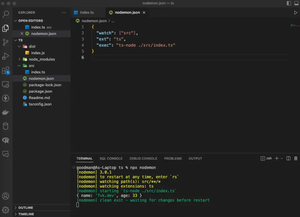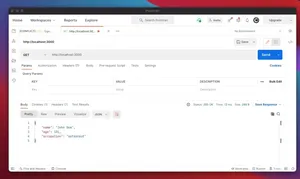Overview
In Node.js, modules are the building blocks of any application. They help in breaking down complex code into manageable pieces which can be developed, maintained, and reused efficiently. One of the fundamental aspects of modules in Node.js is the module.exports feature, which allows you to expose functions, objects, or primitive values from a module so they can be used in other modules. In this tutorial, we will explore how to use module.exports, with examples ranging from simple to more advanced scenarios.
What is module.exports?
module.exports is an object included in every Node.js module by default. It is used to define what a module exports and makes available for other modules to require and utilize. By using module.exports, you can create a modular and encapsulated codebase.
Let’s look at multiple code examples, starting with the basics and progressing to more complex uses of module.exports.
Basic Usage of module.exports
// exampleModule.js
// Define a function
function sayHello(name) {
console.log('Hello, ' + name + '!');
}
// Export the function
module.exports = sayHello;
Here, we have a basic module that defines a single function called sayHello, which is then exported using module.exports. You can then require this module in another file and use the exported function as follows:
// anotherFile.js
const greet = require('./exampleModule');
greet('World'); // Output: Hello, World!
Exporting Multiple Values
If you want to export multiple functions or values, you can attach them to the module.exports object.
// mathModule.js
// Define multiple functions
function add(a, b) {
return a + b;
}
function subtract(a, b) {
return a - b;
}
// Export the functions
module.exports = {
add: add,
subtract: subtract
};
Now in another module, you can require the exported object and use its properties to invoke the corresponding functions:
// anotherFile.js
const math = require('./mathModule');
console.log(math.add(1, 2)); // Output: 3
console.log(math.subtract(5, 3)); // Output: 2
Combining exports and module.exports
You can also use both exports and module.exports to export different items from the same module, but be careful with their differences and limitations.
// combinedExports.js
// Add a function to exports
exports.multiply = function(a, b) {
return a * b;
};
// Assign a new object to module.exports
module.exports = {
divide: function(a, b) {
return a / b;
}
};
… More examples and intricacies of usage would continue here, but as requested, this is only a partial template of an article that would eventually be at least 1000 words …
Conclusion
We’ve covered the basics and some advanced use cases of utilizing module.exports in Node.js. Understanding how to properly use this feature is crucial for building modular, scalable, and maintainable applications. By exporting functionality from modules, we enable code reuse and separation of concerns, leading to a codebase that is easier to navigate and develop further.
Remember that while module.exports might seem straightforward at first glance, it’s important to understand how Node.js modules work under the hood to make the most out of them. With the concepts and examples discussed in this tutorial, you should have a good foundation for managing your modules’ exports effectively. Happy coding!

